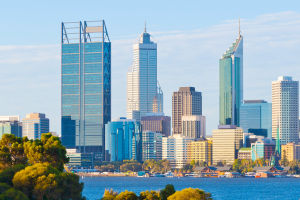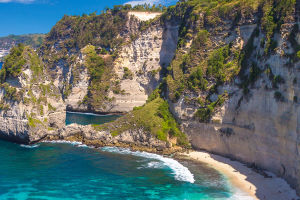The Faroe Islands—a remote group of islands located in the North Atlantic Ocean—offer an experience unlike anywhere else on Earth.
With their rugged landscapes, towering cliffs, and windswept moors, the Faroes remain one of the last places on Earth where nature is still in its purest form.
The archipelago, which consists of 18 islands, is part of Denmark, but it feels like an undiscovered paradise for those who seek adventure and serenity far from the bustle of city life.
This destination is perfect for those who crave untouched beauty and unique experiences. Whether you're an avid hiker, a bird watcher, or simply someone who appreciates stunning landscapes, the Faroe Islands promise a once-in-a-lifetime journey. So, let's explore everything you need to know about this remote destination.
Exploring the Nature of the Faroe Islands
The Faroe Islands are famous for their dramatic landscapes. From towering cliffs that plunge into the Atlantic to rolling green hills dotted with sheep, the islands are an adventurer's dream. Nature enthusiasts will find endless opportunities to explore, with each island offering its own distinct charm.
1. Hiking Adventures: The Faroe Islands are a hiker's paradise, with a range of trails for all levels of experience. Popular hikes include the Slættaratindur, the highest mountain in the Faroes at 882 meters, which offers sweeping views of the surrounding islands. For those looking for something less intense, the Lake Sørvágsvatn hike is a must. The lake sits dramatically on the edge of a cliff, and from a certain angle, it looks like it's floating above the ocean.
2. Birdwatching: If you're a bird lover, the Faroes will blow you away. The islands are home to over 300 species of birds, including puffins, which nest along the cliffs during the summer months. You can find guided birdwatching tours to explore the best spots on the islands, such as Mykines, known for its puffin colonies.
3. Sea Views: The sea is never far away on the Faroe Islands, and it's one of the best ways to experience the islands. The Nólsoy and Hestur islands, which can be reached by ferry, are popular for their stunning coastal views and tranquil atmosphere.
Top Attractions in the Faroe Islands
While the entire archipelago is a marvel of natural beauty, there are a few standout attractions that will take your visit to the next level.
1. Gásadalur and the Múlafossur Waterfall: One of the most iconic images of the Faroe Islands is the Múlafossur Waterfall in the village of Gásadalur. The waterfall cascades directly into the ocean, creating a perfect blend of lush green hills and wild water. It's the perfect place for a photo-op, with the dramatic scenery taking your breath away.
2. Tórshavn: The capital city of the Faroe Islands, Tórshavn, is a charming town with narrow streets, colorful houses, and a picturesque harbor. It's small but packed with history and culture. Don't miss a visit to the National Museum of the Faroe Islands, which offers a fascinating look at the archipelago's past, from Viking settlements to the present day.
3. The Sea Tunnel: One of the most innovative and exciting infrastructure projects in the Faroes is the submarine tunnel that connects the islands of Eysturoy and Streymoy. The tunnel runs underneath the sea and allows travelers to cross the islands easily by car, making it a significant part of the island's transportation network.
How to Get to the Faroe Islands
The Faroe Islands are relatively easy to reach, though they remain somewhat off the beaten path for many international travelers.
1. Flights: The Vágar Airport (FAE) is the only airport in the Faroe Islands and is located on the island of Vágar. There are regular flights from major cities like Copenhagen (Denmark), Reykjavik (Iceland), and London (UK). You can expect flight prices to range from $150 to $300 USD for a round trip, depending on the season and departure location.
2. Ferries: The islands are connected by a reliable ferry network (one-way adult fare is $6-22 USD). Ferries run between the islands, and boats are the primary means of transportation for locals. Visitors can also take ferry tours to visit several islands in one go.
Where to Stay: Hotels and Accommodation
While the Faroe Islands are remote, they still offer a range of accommodation options to suit different budgets. Most visitors stay in Tórshavn or nearby islands, where you can find everything from cozy guesthouses to boutique hotels.
1. Hotel Føroyar: Located in Tórshavn, this modern hotel offers panoramic views of the city and surrounding islands. It's the perfect place to relax after a day of hiking or birdwatching ($200–$350 per night).
2. Gjáargarður Guesthouse: Situated in the village of Gjáargarður, this charming guesthouse offers a more rustic experience, with stunning views of the surrounding mountains and sea. It's perfect for those seeking tranquility and a true Faroese experience ($120–$180 per night.).
3. The Atlantic Swan Hotel: Located on the island of Vágar, this hotel offers an affordable yet comfortable stay, with easy access to popular hiking spots like Lake Sørvágsvatn ($150–$250 per night.).
Local Food Specialties to Try
The Faroe Islands offer a unique culinary experience, heavily influenced by the sea and the harsh, natural environment. Here are some of the local specialties to try during your visit:
1. Kaltblóðed Fiskur (Cold Fish): Local fish, especially cod, is a staple of Faroese cuisine. You'll find it served in many ways, from smoked to dried, or served in hearty stews ($25–$40).
2. Ræst kjøt (Fermented Meat): One of the most traditional dishes is fermented lamb, called ræst kjøt. It's often served with root vegetables and is a true taste of Faroese heritage ($30–$50).
3. Skerpikjøt (Cured Mutton): Skerpikjøt is another traditional Faroese dish, where mutton is air-cured in the cold, salty winds of the islands. This dish is often served with potatoes and seasonal vegetables ($25–$40).
When to Visit the Faroe Islands
The Faroe Islands are a year-round destination, but the best time to visit depends on your interests.
1. Summer (June to August): This is the most popular time to visit the Faroes, with long daylight hours, making it perfect for outdoor activities like hiking and birdwatching. Expect mild temperatures around 10-13°C (50-55°F), but be prepared for rain and wind.
2. Winter (December to February): If you prefer fewer crowds and enjoy the quiet winter months, visiting during winter can offer a magical, snow-covered landscape, but keep in mind that some tourist services may be limited.
Final Thoughts
The Faroe Islands are a truly unique and off-the-beaten-path destination for those seeking an authentic experience of natural beauty and adventure. Whether you're hiking up mountains, gazing at waterfalls, or simply soaking in the dramatic scenery, you'll find that the islands offer an unparalleled sense of peace and tranquility.
So, if you're ready for a trip where you can truly escape the ordinary, consider the Faroe Islands—nature, culture, and untouched beauty await.


